Chapter 3 - Fuselage
Section 2 - Rear Fuselage
Bonding the Panels
Once you are satisfied that you have the panels oriented properly, pull together some 1” X 2” scrap ½” thick last-a-foam blocks. These blocks used in conjunction with finishing nails are used to hold the panels together while the micro cures.
Mix up a good sized batch of thick micro and butter up the edges of the panels. Do not over do it. Just coat each side well and remove all excess. You do not want the micro oozing out the bottom and spreading onto the panel surfaces. However you do not want gaps between the foam panels, either. If there are gaps, carefully fill them with micro. Use the small block and finishing nails to secure the panels while the micro cures.
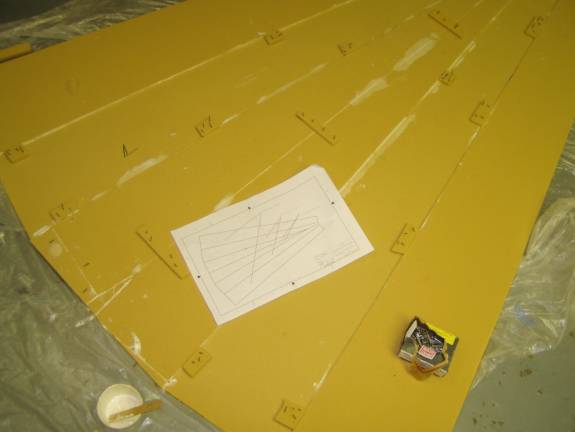
Scraps of foam used with nails to secure panels
After the micro has cured, remove the temp blocks and inspect the panels. You may need to sand the micro flat in a few places and you may need to repair some areas with more micro.
Where the ½” foam panels meet the ¼” panels, the ½” foam panels need to be sanded into a ramp so there is a smooth transition from the surface of the ½” panel to the ¼” panel. This ramp should extend about an inch and a half onto the ½” sheet. Be careful not to sand into the ¼” foam. We need the full thickness. When you are satisfied with inside surface of the rear fuselage panels, vacuum them well.
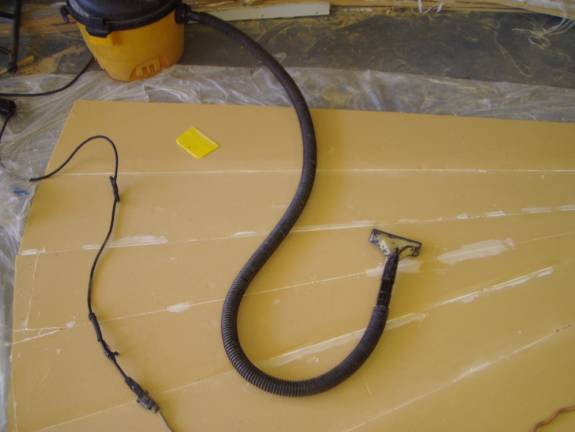
Vacuum the panel surface before taping and glassing
The fiberglass will cover the entirety of the ½” panels and will extend exactly 1” onto the ¼” panels. Refer down a couple of photos to understand the layup schedule. Lay two layers of masking tape lengthwise on the ¼” foam panels, 1” inside the interface between adjacent panels. The masking tape does not stick well to the foam panels, so do not stretch it tight, press it straight into the panel.
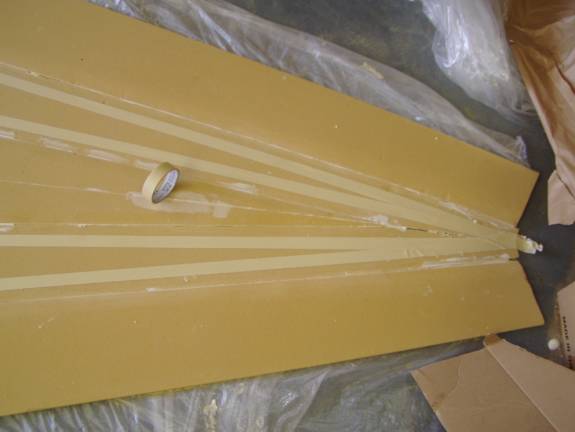
Masking tape Dams
Glassing the Inside
Once the tape is secure mix up a batch of thin slurry and slurry the ½” panels and 1” of the ¼” panels. The layup a single layer of BID on the 45 degree bias. This bias should be oriented front to back.
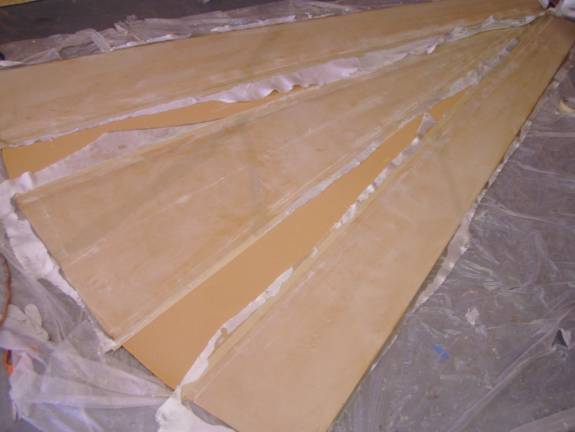
Fiberglass on inside of rear fuselage panels
Let the fiberglass partially cure, at least 12 hours. The glass is easer to cut if it is still in the green state. Cut the fiberglass free of the panels at the intersection of the fiberglass and the masking tape. Remove the tape. Be very careful not to cut into the foam panel. We need the integraty of the foam across the fiberglass edge.

Cut the fiberglass at the tape edge
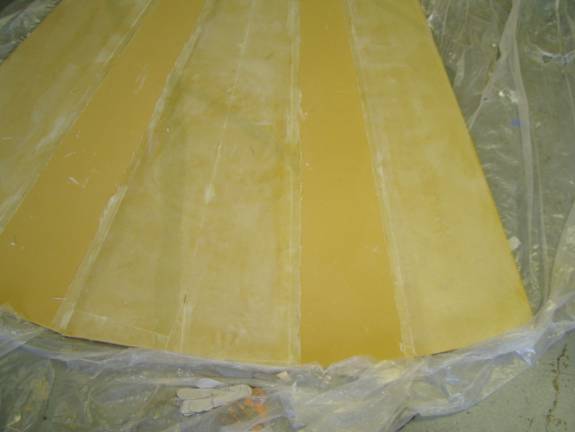
Completed Rear Fuse Inside Glass
Flip the large panel over and prepare the outside as you did the inside. Sand down any micro that may have oozed from the joints and fill any cracks with micro.
Use a sanding block to gently sand a joggle all the way around the outside of the large panel. The joggle should be about 2" along the long side; the side that will end up being the top edge of the rear fuselage side. The joggle should be about 3 inches along the forward edge of the outboard most panels; the edge that will end up being the forward edge of the rear fuselage section sides. The joggle should be about 4" along the forward edge that will end up being the front bottom edge of the rear fuse section. The reason that the joggle is larger on the front bottom edge is that we will eventually removing about 2" of material here and want to end up with a 2" joggle left. You can look ahead a few photos to the part describing the trimming of the rear fuselage section to better understand the final result.
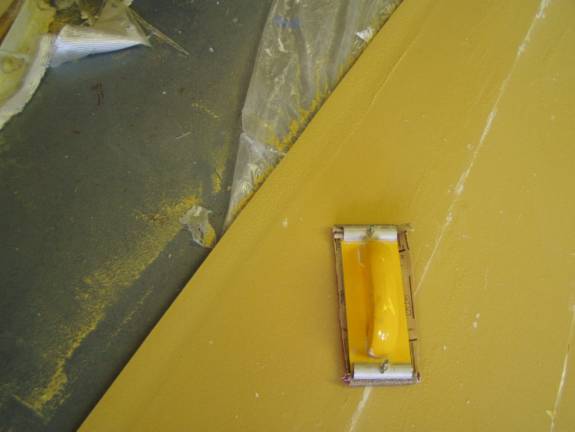
Adding a joggle into the foam
Give the outside panel a final once over. The outside surface of the aircraft will only be as smooth as this panel is now. Finally vacuum the surface and prepare to glass.

Again, vacuum the surface before slurry and glass
We will be fiberglassing the rear panel in one layer of UNI with the major fibers running front to back of the aircraft, then one layer of BID with the 45 degree bias running front to back. This will be a large layup so prepare well. Cut, bag and mark all of your glass. Have plenty of gloves, brushes, epoxy and micro on hand. Go for it.
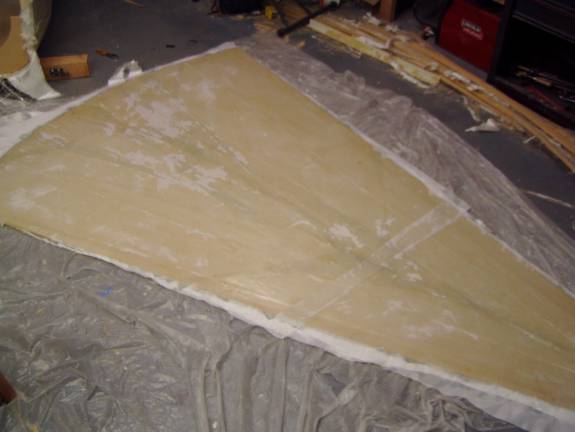
Completed rear layup covered in peel ply